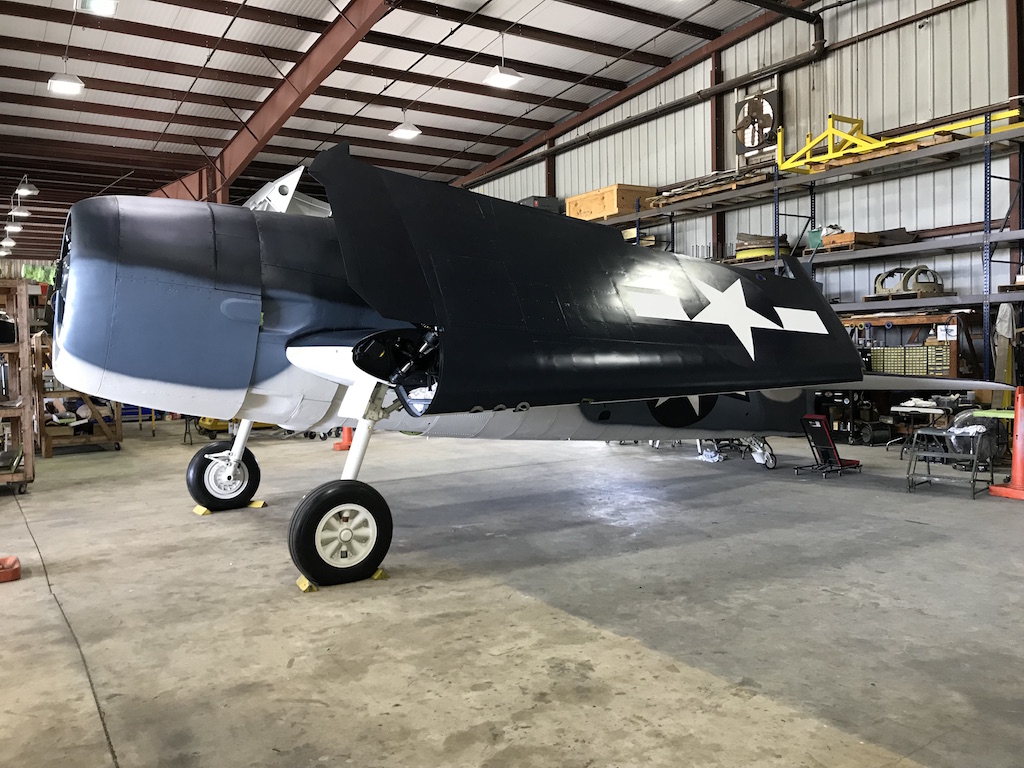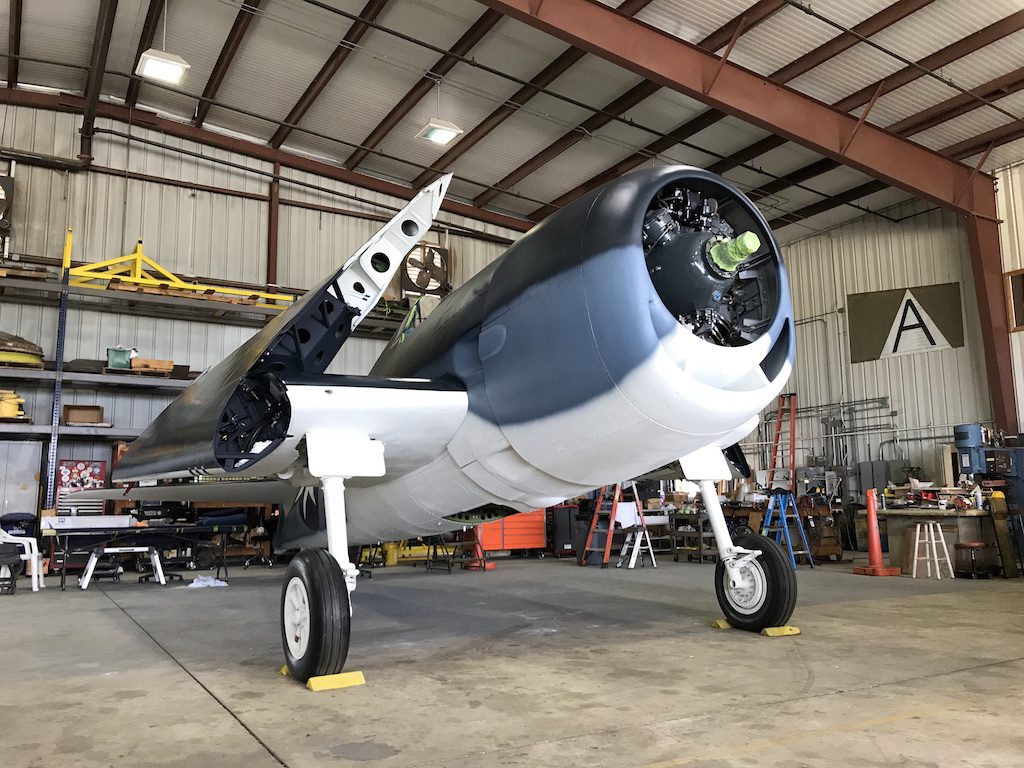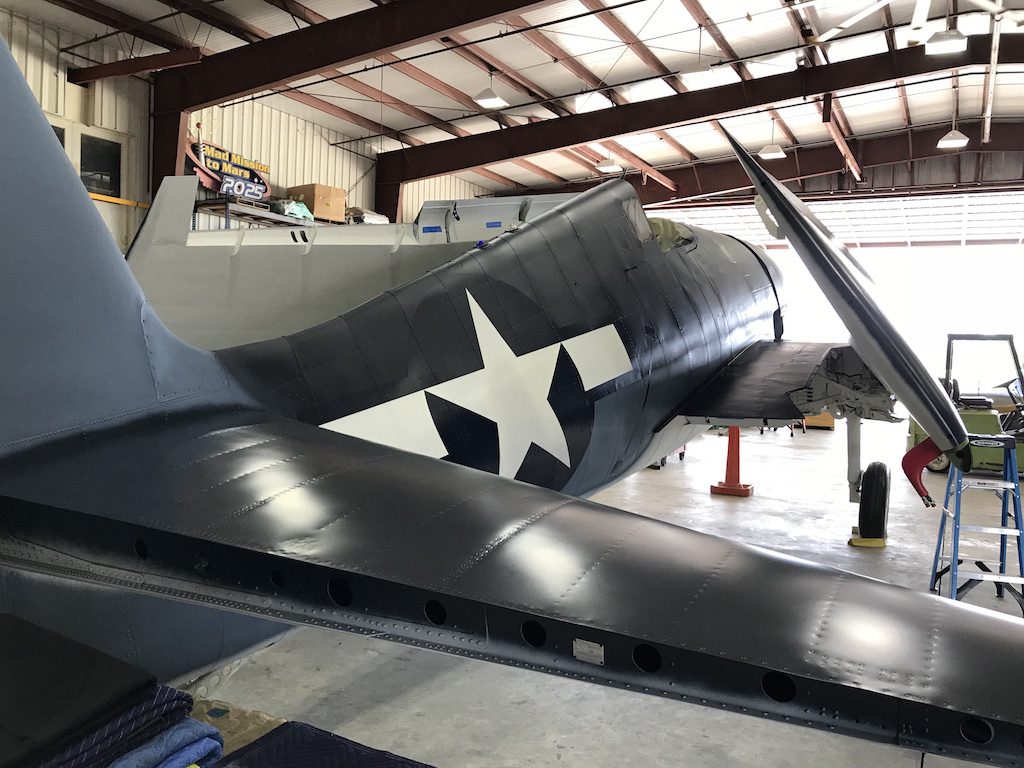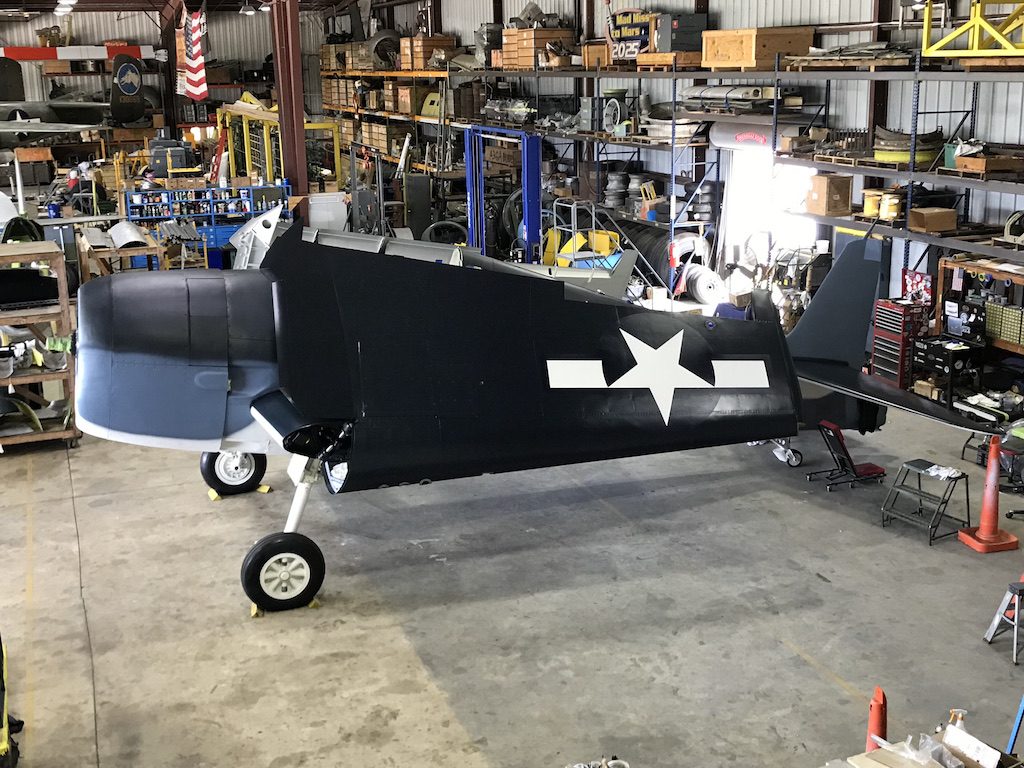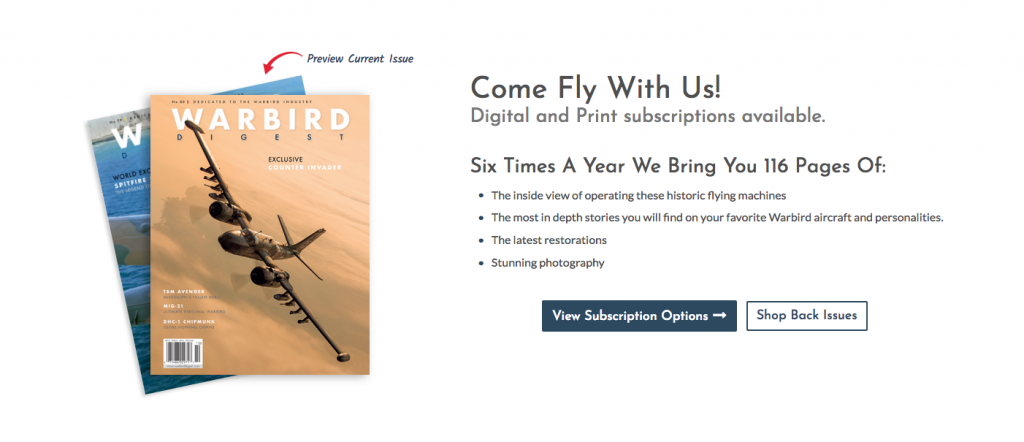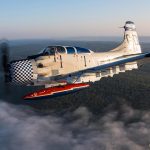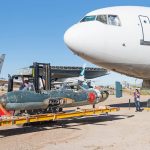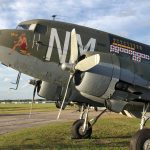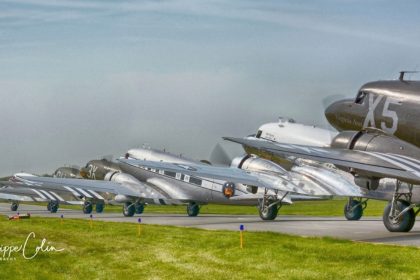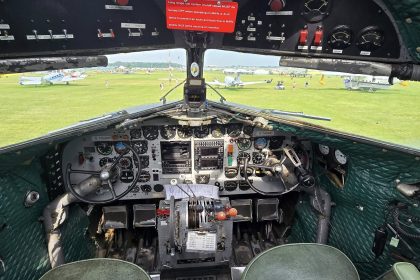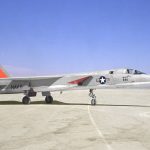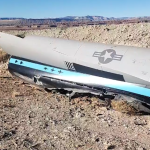The Collings Foundation’s Grumman F6F-3N Hellcat Bu.41476 is in the final stages of her restoration at American Aero Services in New Smyrna Beach, Florida, and we have just received an update on progress from Hunter Cheney which we thought our readers might enjoy.
The Hellcat was without question the most successful and important Navy fighter in the Pacific theater, with a kill to loss ratio of 19 to 1. Pilots like Medal of Honor recipient David McCampbell flew the Hellcat and he was the Navy’s all-time highest scoring ace.
The history of the Collings Foundation’s Hellcat is deeply intertwined with the birth of Night Fighter development in the U.S. Navy. The Navy faced a real challenge in early 1942, as they simply had no defense against nighttime Japanese air attacks. Evan “Pete” Aurand was an ambitious naval officer flying SBD dive-bombers with Scouting 2, and he simply had to get into fighters. Accepting the first assignment offered in May 1942, Aurand headed for Naval Air Station Quonset Point in Rhode Island. He became immersed in the effort to build a night fighting aircraft to protect the fleet. It would be a type of aircraft that the U.S. Navy had never possessed before. Aurand worked closely with scientists at the Massachusetts Institute of Technology (MIT) to improve the Hellcat’s effectiveness as a night fighter. The Navy soon established three squadrons to pioneer the use of airborne radar and navigation tools, with VF(N)-76 being one of them. Pete Aurand was instrumental in this secret program, and was awarded the Distinguished Service Medal for his contributions to developing these important technologies.
Select F6F-3 Hellcats coming off Grumman’s production line in Bethpage, New York received night fighter modifications in secret, and as a consequence, very little is known about the actual conversion process. We do know the aircraft received a new instrument panel and the installation of a radar pod. The modifications made the F6F-3N an entirely different beast to the stock Hellcat. It was designed to hone in on a target in the dark using its AIA or AN/APS-6 radar as a guide. The pilot learned to fly the fighter using the rudimentary radar scope in the cockpit, before picking up the target aircraft visually at very close range.
On January 15, 1944 the U.S. Navy accepted our F6F-3N Hellcat for service, and received her five days later. She initially joined VF(N)-76 at NAS Quonset Point. In talking to pilots who served in the squadron, we have learned that each aircraft had a unique radar fitted. No two sets worked exactly alike. Reaching squadron strength, VF(N)-76 flew to San Diego, California for embarkation on a ship to Hawaii. From there they joined Task Force 58, rushing headlong into the Philippine campaign. From Quonset Point to front line service with the Fleet took a mere 26 days!
Once in the Pacific Theatre, VF(N)-76’s Hellcats were divided into four Detachments, with aircraft dispersed to five U.S. Navy carriers: Bunker Hill, Yorktown, Hornet, Essex and Lexington. With the ad hoc nature of their assignments, record keeping was similarly ad hoc, so it’s a little unclear exactly which of the five ships that the Collings Foundation’s Hellcat flew from during this period at sea between January and September, 1944. However, the radar-equipped Hellcats immediately began to take a toll on the nighttime Japanese raiders which had previously been unopposed. In fact VF(N)-76 became the highest scoring night fighter squadron, with one detachment claiming 26 victories.
The task force pressed the attack against the Imperial Japanese Navy. Well-known engagements included the Battle of the Philippine Sea, the ‘Marianas Turkey Shoot’ and the invasion of Iwo Jima. Several Hellcat pilots became night fighter aces during this period.
Our Hellcat transferred to VFN-101 in September 1944. This squadron had previously operated F4U-2 Corsair night fighters in a combat role, and seemed destined to use the F6F next. However, within the month, Bu.41476 moved to Carrier Aircraft Service Unit 27 (CASU-27) at NAS Charleston, Rhode Island. CASU-27 was responsible for maintaining the night fighters for pilot training as well as preparing aircraft for night fighter squadrons going to the fleet. Bu.41476 transferred to VF(N)-91 in 1945, but things were moving very quickly by this point in the war. New F6F-5N Hellcats were reaching squadrons in greater numbers, so the war-weary F6F-3N aircraft were now considered “yesterday’s new car.”
Bu.41476 therefore remained stateside during this deployment, with F6F-5Ns having replaced their F6F-3Ns forebears in fleet use at this time. Bu.41476 served with NACTU (Night Attack and Combat Training Unit) Atlantic Fleet from November through January, 1945. From there, she moved on to VF-52 (the precursor to VF(N)-52), and then on to the day fighter squadron VF-3. In July 1945, the nomadic Bu.41476 became a pool aircraft with CASU 23 near NAS Norfolk. This rare night fighter F6F-3N was now far removed from her pioneering days as a guardian of the fleet. In due course, like thousands of other postwar surplus aircraft, the U.S. Navy struck her from their books.
At NAS Norfolk, she became an instructional airframe, serving a new generation of maintenance trainees until being placed into sealed storage container, and more or less forgotten about. Some decades later, Navy Captain Walt Ohlrich, a legend in the warbird movement, found Bu.41476. He sourced a set of new outer wing panels and restored the old fighter to flight worthy condition – unheard of for a U.S. government-owned museum aircraft.
For the next several years, the Hellcat showcased Navy and Marine Corps aviation heritage at air shows on the U.S. east coast. But, eventually, some pencil-pusher found out that the historic aircraft was flying and forced her grounding. After that, the Hellcat went on display at what was then the U.S. Marine Corps Museum in Quantico, Virginia. Hellcat Bu.41467 moved again in 2002, this time on loan to the Evergreen Aviation & Space Museum in McMinnville, Oregon. Here it went on display as a day fighter for most of the next decade.
The Collings Foundation traded a Boeing FB-5 biplane fighter to the Marine Corps Museum for their surplus Hellcat in 2012. So now, the Hellcat moves into the next phase of her life, destined for restoration to the highest standards, in stock night fighter condition. The story of WWII Naval Aviation and the role of the night fighters will be told through this aircraft. Joining the Foundation’s F4U-5N Corsair, a night fighter in the Korean War, the Hellcat will be the Alpha displaying U.S. Navy night fighting legacy. This aircraft represents a vital and little researched link to the past. While its detailed combat record may never be fully known, it is one of the most important aircraft the Foundation may ever find. More information is being sought on Bu.41476’s wartime history, but it is already clear that she is one of the most historic and important night fighting aircraft in existence.
The Collings Foundation’s Grumman F6F-3 will be featured in one of the upcoming issues of Warbrid Digest. Don’t miss the chance to read about this unique and rare warbird, subscribe now!







